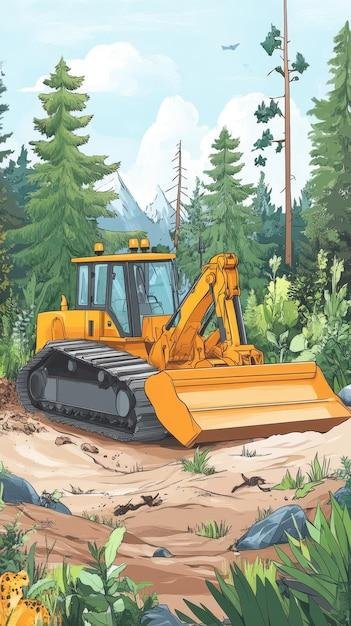
Beneath a quiet forest’s silent canopy, a bulldozer’s rumble unveiled a relic from the past – an ancient Indigenous site, a treasure trove of history and culture. Amidst the towering trees and verdant undergrowth, destiny intertwined the fate of this sacred place with a dedicated forester. Now, in a resounding clash between progress and preservation, the fight to protect this unearthed heritage begins, the discordant chords of heavy machinery echoing against the backdrop of hallowed ground.
– The Hidden Legacy Unearthed: Indigenous Site Discovered by Bulldozer
Beneath the steel blade of a bulldozer, an ancient Indigenous site lay entombed. The towering trees and undergrowth that once shielded it had been cleared, revealing a tapestry of stone tools, pottery fragments, and hearth remains – a testament to the rich cultural heritage that had once flourished on this land.
Unbeknownst to the bulldozer’s operator, he had stumbled upon a living record of the region’s past inhabitants. The tools spoke of their daily lives, the pottery hinted at their artistry, and the hearths whispered tales of warmth and sustenance. Their legacy, however, was now teetering on the brink of destruction, threatened by the relentless advance of urban sprawl.
– A Bulldozers Threat to an Ancient Treasure: A Foresters Battle for Preservation
A dozer’s blade sliced through centuries-old artifacts, scattering fragments of ancient pottery and stone tools like confetti. Amidst the devastation, one man stood defiant—a forester named Jerry Jack.
His heart sank as he surveyed the scene, recognizing the irreplaceable loss. This patch of land in northern British Columbia was home to an untold history, a testament to the rich cultural heritage of the Indigenous peoples who had lived there for millennia. But in the blink of an eye, much of that heritage had been erased.
– Uncovering the Truth: Expert Insights and Recommendations for Site Protection
Tree faller Aaron Hill stumbled upon a series of unnatural looking mounds while he was working at a logging site near Chemainus. The following field season, he found more while leading a guided archaeological tour with the Cowichan Tribes. The mounds turned out to be ancient Indigenous middens, or trash dumps that often have layers of artifacts indicating presence in an area over a period of time.
Hill has been trying to get Western Forest Products to protect the site and retain the ancient remnants of the Cowichan Tribes, the inhabitants of the area for thousands of years, but the company is proceeding with logging plans in the area, putting the middens at risk. “I just can’t turn a blind eye to it when I see these piles of clam shells, abalone, rock-crab shells, burnt rock, baked clay, chipped stone, ground stone, debitage, broken stone tools, ochre, and charcoal,” Hill told CHEK News. “To me, it’s obvious that there have been humans there, living off of the land, harvesting the land for thousands of years.”
The Conclusion
Underneath the rhythmic symphony of machinery, there was an unspoken harmony waiting to be unveiled. A bulldozer’s roar became a revealer of time’s secrets, a harbinger of history’s hidden whispers. The once-serene land now echoed with the clash of preservation and progress, a battle waged on the ancient battleground of a people long gone. But amidst the clamor, a forester stood his ground, a protector of the past against the relentless march of the present. His unwavering resolve was a testament that even in the face of industrial might, the echoes of our ancestors could still be heard, their stories still yearned to be uncovered.